
Chill is an investigative and modern horror role-playing game originally published by Pacesetter Ltd in 1984 that captures the feel of 20th-century horror films.
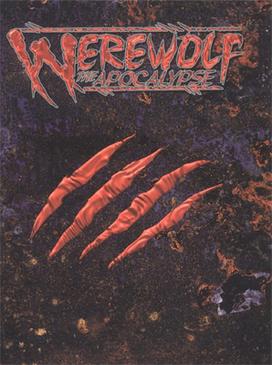
Werewolf: The Apocalypse is a role-playing game of the Classic World of Darkness game series by White Wolf Publishing. Other related products include the collectible card games named Rage and several novels. In the game, players take the role of werewolves known as "Garou". These werewolves are locked in a two-front war against both the spiritual desolation of urban civilization and supernatural forces of corruption that seek to bring the Apocalypse. Game supplements detail the other shape-shifters.

Adventure Construction Set (ACS) is a game creation system written by Stuart Smith that is used to construct tile-based graphical adventure games. ACS was published by Electronic Arts in 1984 for the Commodore 64, then for the Apple II, Amiga, and MS-DOS. Smith previously developed several commercial adventure games of a similar style, such as Ali Baba and the Forty Thieves (1981).
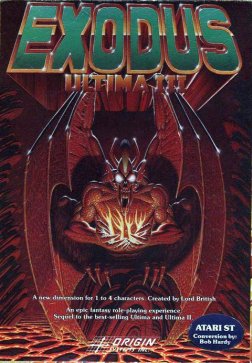
Ultima III: Exodus is the third game in the series of Ultima role-playing video games. Exodus is also the name of the game's principal antagonist. It is the final installment in the "Age of Darkness" trilogy. Released in 1983, it was the first Ultima game published by Origin Systems. Originally developed for the Apple II, Exodus was eventually ported to 13 other platforms, including a NES/Famicom remake.

Dragonlance Adventures is a 128-page hardcover book for the Dragonlance campaign setting for the first edition of the Advanced Dungeons & Dragons fantasy role-playing game.

Greyhawk Adventures is an accessory for the Advanced Dungeons & Dragons (AD&D) World of Greyhawk campaign setting.

Wizardry III: Legacy of Llylgamyn is the third scenario in the Wizardry series of role-playing video games. It was published in 1983 by Sir-Tech.
The Arms and Equipment Guide is the name of two supplementary rule books for the Dungeons & Dragons fantasy role-playing game. Each describes various equipment that can be used in a campaign.
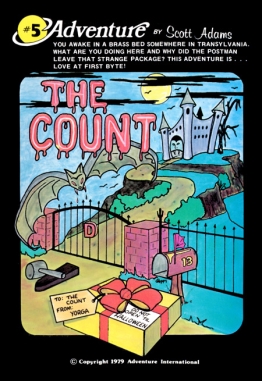
The Count is a text adventure written by Scott Adams and published by Adventure International in 1979. The player character has been sent to defeat the vampire Count Dracula by the local Transylvanian villagers, and must obtain and use items from around the vampire's castle in order to defeat him.
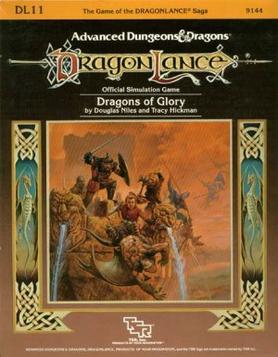
Dragons of Glory is a Dungeons & Dragons source book in a series of modules from the Dragonlance campaign setting. It is one of the 16 DL modules published by TSR between 1984 and 1986.
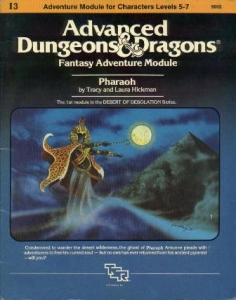
Desert of Desolation is a compilation adventure module published by TSR for the Dungeons & Dragons (D&D) fantasy roleplaying game. It combines three previously published individual modules: Pharaoh, Oasis of the White Palm, and Lost Tomb of Martek. The modules were made for use with the first edition Advanced Dungeons & Dragons (AD&D) rules. Pharaoh was created by Tracy and Laura Hickman soon after the couple married in 1977, and published by TSR in 1982. Oasis of the White Palm was a collaboration between Tracy Hickman and Philip Meyers, and Hickman wrote the Lost Tomb of Martek on his own; both were printed in 1983.

The Ruins of Undermountain is a boxed set for the Forgotten Realms campaign setting for the second edition of the Advanced Dungeons & Dragons fantasy role-playing game. The set was written by Ed Greenwood and published by TSR. It featured box cover art by Brom. and was published in 1991.
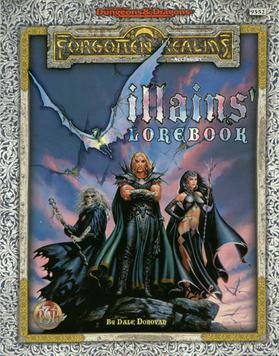
Villains' Lorebook is an accessory for the Forgotten Realms campaign setting for the second edition of the Advanced Dungeons & Dragons fantasy role-playing game.

Dungeon Master Option: High-Level Campaigns is a supplemental sourcebook to the core rules of the 2nd edition Advanced Dungeons & Dragons (AD&D) fantasy role-playing game.

Psionic Artifacts of Athas is an accessory for the 2nd edition of the Advanced Dungeons & Dragons fantasy role-playing game, published in 1996.

The Book of Adventure Games is a book by Kim Schuette published in 1984 by Arrays, Inc.

Griffin Island is a boxed supplement for the fantasy role-playing game RuneQuest. Originally published by Chaosium in 1981 as Griffin Mountain, a set of adventures set in the world of Glorantha, this edition was published in 1986 by The Avalon Hill Game Company as part of its third edition RuneQuest rules set, and had all references to Glorantha removed. In addition to an adventure campaign, Griffin Island contained role-playing material to help gamemasters design adventures in the setting. It received several positive reviews in game periodicals of the day.

Freak Legion: A Player's Guide to Fomori is a supplement published by White Wolf Publishing in 1995 for the horror role-playing game Werewolf: The Apocalypse.

Ashes to Ashes is an adventure module published in Q3 1991 by White Wolf Publishing for use with their tabletop role-playing game Vampire: The Masquerade.
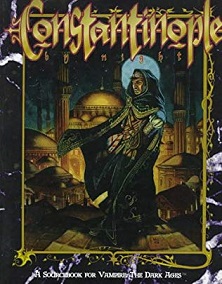
Constantinople by Night is a supplement published by White Wolf Publishing in 1996 for the medieval horror role-playing game Vampire: The Dark Ages, a spin-off of Vampire: The Masquerade.




















